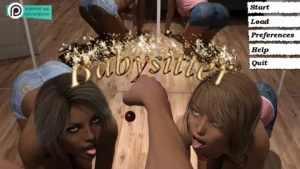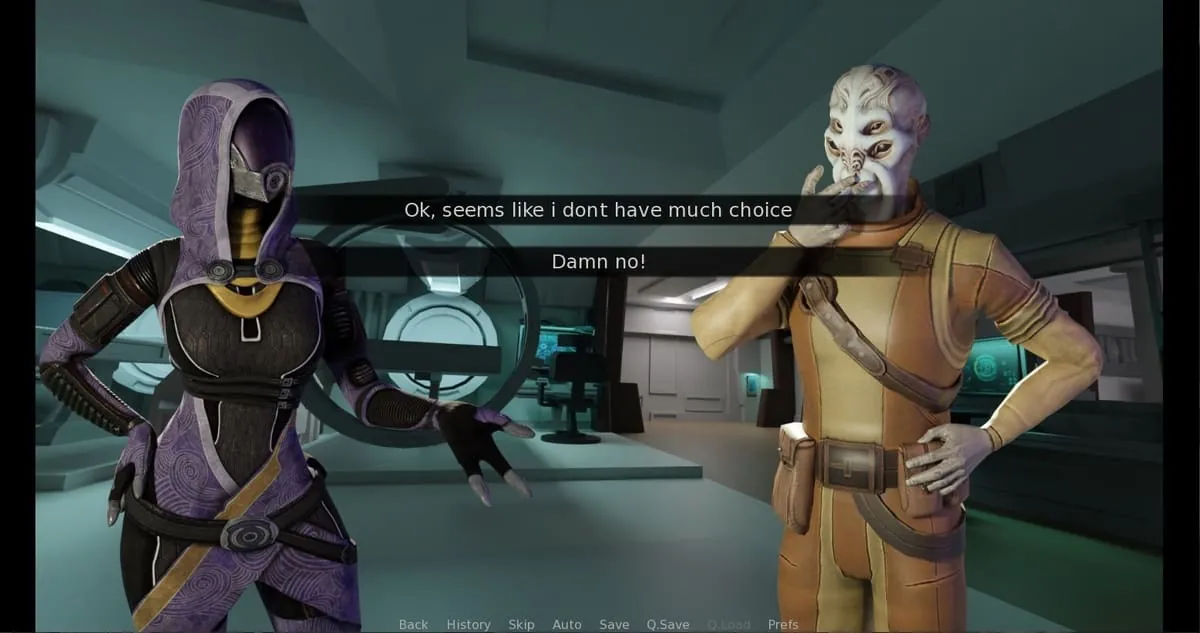
Babysitter
Play Babysitter
Babysitter review
Exploring Gameplay, Storyline, and Player Engagement in Babysitter
The Babysitter game offers a unique adult interactive experience that combines storytelling with player-driven choices. In this article, we explore the core aspects of Babysitter, including its gameplay mechanics, narrative elements, and what makes it engaging for its audience. Whether you are curious about the game’s features or seeking practical insights, this guide will provide a comprehensive overview of Babysitter and its appeal.
Understanding Babysitter: Gameplay and Mechanics
What Is Babysitter? An Overview of the Game
Let me paint you a picture. 🎨 You’re scrolling through interactive titles, and you stumble upon one called Babysitter. Your first thought might be… exactly that. But let me stop you right there. This isn’t a game about changing diapers or putting kids to bed. Far from it. The Babysitter game overview reveals a narrative-rich, adult-oriented experience that completely redefines the premise. You step into the shoes of a character who takes on a babysitting job, only to find the situation is much more complex and mature than you ever anticipated. It’s a visual novel at its heart, but one where your decisions carry real, tangible weight. 😮
I remember my first time booting it up. I expected a simple, perhaps cliché story. What I found was a deeply immersive world where the characters felt real, with their own desires, personalities, and secrets. This Babysitter game overview wouldn’t be complete without stating that it’s a masterclass in building atmosphere. The game uses stunning visuals and a compelling soundtrack to pull you into its world from the very first click. It’s less about a job and more about navigating a web of intricate relationships and personal discoveries. If you’re looking for a passive experience, this isn’t it. You are the pilot of this story. ✈️
So, how does the Babysitter game work on a fundamental level? It’s an adventure driven by your curiosity. You explore environments, engage in conversations, and make choices—both big and small—that send ripples through the entire narrative. The core loop is deceptively simple, but the depth comes from the consequences. It’s this focus on a mature, interactive adult game experience that truly sets it apart from more casual titles. You’re not just watching a story unfold; you are actively writing it with every decision you make.
Core Gameplay Features and Player Interaction
The magic of Babysitter lies in its mechanics. The adult interactive game mechanics are designed to be intuitive yet powerful, giving you a tremendous amount of agency. At its core, you interact with the world through a point-and-click interface. You’ll navigate beautifully rendered locations, from a cozy living room to more private spaces, each filled with interactive elements. Click on a character to start a conversation, examine an object to learn more about the world, or select a dialogue option to express your intent. 🖱️
The gameplay features in Babysitter are built around this dialogue and exploration system. What impressed me most was how natural the conversations feel. You aren’t just picking from a list of generic “Good,” “Neutral,” or “Evil” responses. Instead, you choose from nuanced statements and questions that reflect a range of emotions and intentions. I recall one playthrough where a simple choice to ask about a family photo instead of commenting on the weather completely altered my relationship with a main character, unlocking a branch of the story I didn’t even know existed. This is the power of its design. 💪
A huge part of the interactive adult game experience is the relationship management system. It’s not a visible meter you’re trying to max out, but a more organic feeling of building trust, sparking romance, or creating tension. Your actions and words directly influence how characters perceive and react to you. It feels real. Forget grinding for points; here, you’re investing in believable human (or character) connections.
To give you a clearer picture of the core systems at play, here is a breakdown of the primary ways you interact with the game:
| Feature | Player Interaction | Impact on Gameplay |
|---|---|---|
| Dialogue Trees | Choosing specific responses and questions during conversations. | Directly shapes character relationships and unlocks unique story paths. |
| Environmental Exploration | Clicking on objects and locations to examine or use them. | Reveals backstory, finds key items, and triggers special events. |
| Decision Points | Making critical choices at narrative crossroads. | Alters the main plot direction and leads to multiple endings. |
| Time Management | Choosing how to spend your in-game time each day. | Determines which events you witness and which relationships you can advance. |
Understanding the Babysitter game controls is thankfully straightforward. It’s primarily mouse-driven, making it accessible even if you’re not a hardcore gamer. Left-click to select, interact, and navigate. The inventory and menu systems are clean and intuitive, never getting in the way of the immersion. The real skill isn’t in mastering complex button combos, but in learning to read the situation and think carefully before you act or speak. 🧠
How Choices Shape the Babysitter Experience
This is where Babysitter truly shines. The concept of player choices in Babysitter isn’t just a marketing gimmick; it’s the very DNA of the game. Every dialogue option you pick, every action you take (or choose not to take), and every secret you discover weaves together to create a story that is uniquely yours. There is no single “correct” path. There is only your path. 🌳
I learned this the hard way. In my first attempt, I played it safe, trying to be the “perfect” babysitter. The story was pleasant but short, and I felt like I’d missed something. On my second playthrough, I decided to be more curious and, frankly, a bit bolder. I asked probing questions, explored areas I was technically told to avoid, and flirted with the boundaries of my role. The game opened up into a completely different, much more dramatic and engaging narrative. It was like playing a whole new game! This is the brilliance of its design—your player choices in Babysitter have consequences that genuinely redefine the experience.
The gameplay features in Babysitter that facilitate this are the multiple, branching story arcs. The game tracks your decisions behind the scenes, and key moments serve as branching points that lock or unlock entire sections of the content. It’s not just about getting a different ending slide; it’s about living a different story from the middle onward.
Pro Tip: Don’t reload a save immediately after a choice you think is “wrong.” Some of the most memorable and authentic moments come from dealing with the unintended consequences of your actions. Roll with it! You can always do another playthrough to see what you missed. 😉
So, how does the Babysitter game work to make you care? It does so by making your choices feel meaningful. When a character remembers something you said hours of gameplay earlier and brings it up in a moment of tension, it creates a powerful connection. You’re not just guiding a puppet; you’re building a history. This sophisticated approach to adult interactive game mechanics elevates it from a simple diversion to a compelling piece of interactive fiction. You become an active participant in a dynamic world, and that is the ultimate reward. The Babysitter game overview ultimately reveals a title that respects your intelligence and rewards your curiosity, making every moment you invest feel truly significant. 🏆
Babysitter offers a distinctive adult interactive experience where player choices deeply influence the unfolding narrative and gameplay. Its engaging mechanics and immersive storytelling make it a notable title within its genre. Whether you are a seasoned player or new to this type of game, Babysitter provides a compelling experience worth exploring. Dive into the game to discover its unique blend of interaction and narrative, and see how your decisions shape the story.












